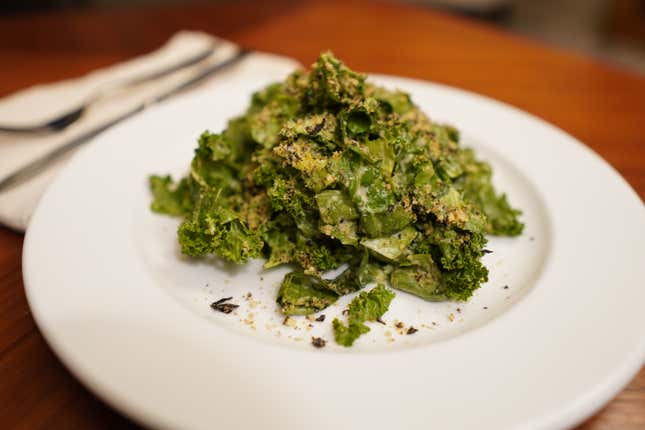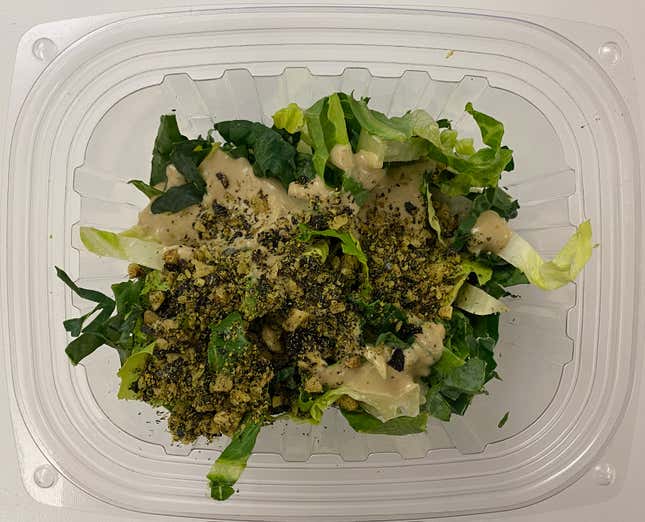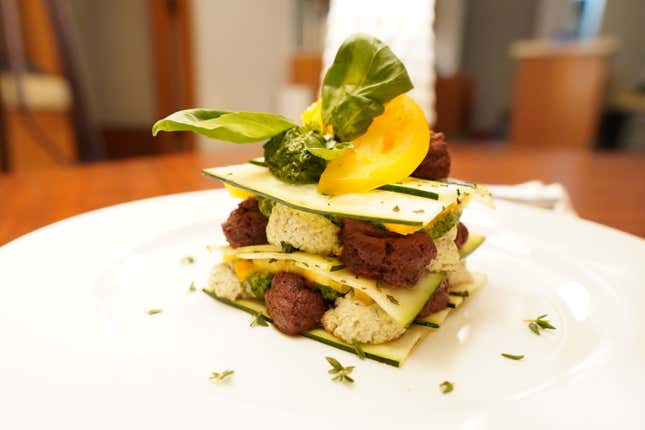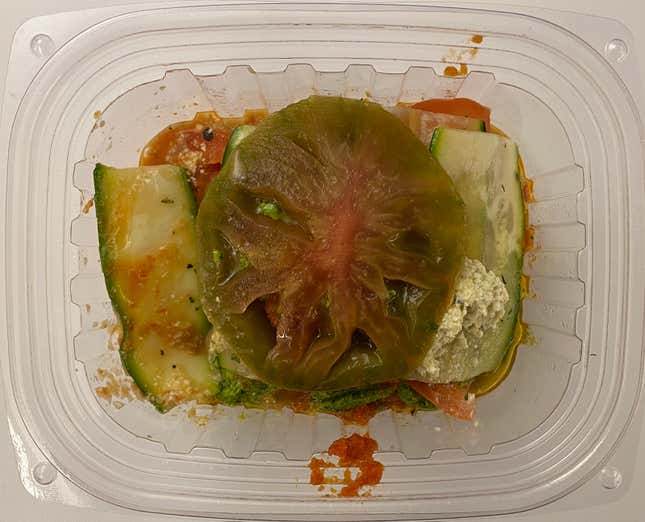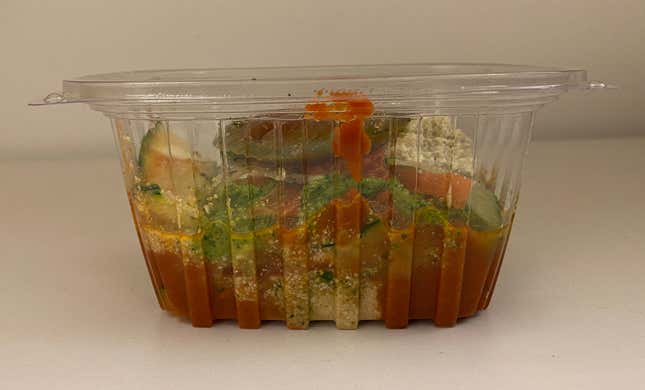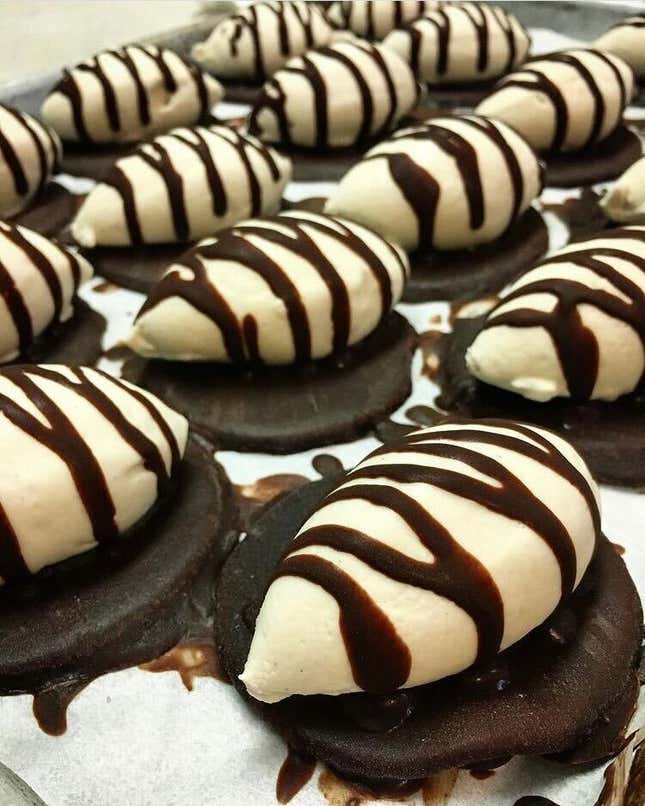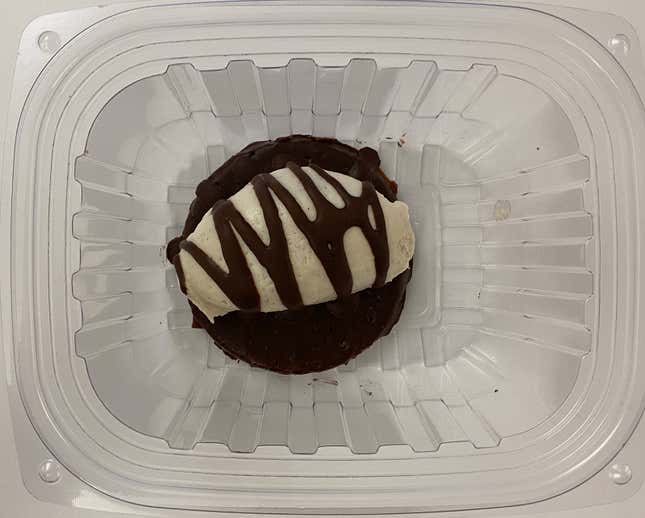She’s a ‘Bad Vegan,’ But How’s Her Lasagna?
Pure Food and Wine, the restaurant at the center of the Netflix docuseries Bad Vegan, gets resurrected through a collab with Postmates.
EntertainmentTV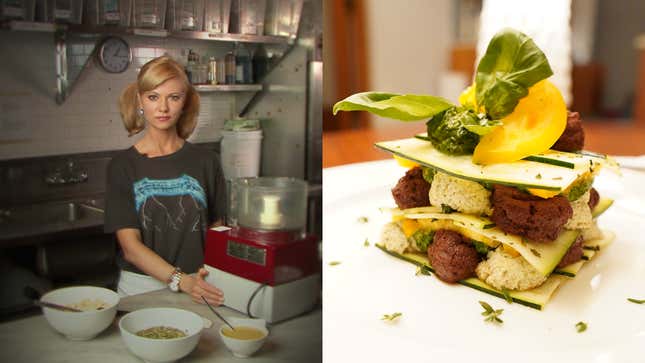

While watching Bad Vegan, I had to wonder whether Sarma Melngailis’s lasagna was as bad as her decisions.
In case you’ve been dead all week, Bad Vegan is a four-part Netflix series that chronicles a scam pulled on star restauranteur Melngailis by her former boyfriend, Anthony Strangis. While providing a sketchy portrait of his life, Strangis elbowed his way into Melngailis’s businesses of the raw vegan New York restaurant Pure Food and Wine and its takeaway sister shop One Lucky Duck. He also extracted nearly $2 million from her, as a test of her loyalty, with promises that she’d be paid back and then some. (Spoiler alert: She wasn’t.) Though Melngailis was so far under Strangis’s spell that one could argue that she was “brainwashed” (as scientifically dubious as that term is), the effect is less like watching someone be wooed into a one-woman cult and more like watching someone julienne her way into the open jaws of a crocodile. The upside is that Melngailis made enough bad decisions to pad out a must-see Netflix limited docuseries, which begs the question: Were they really such bad decisions after all?
Early on in the doc, someone mentions the signature dish of Pure (which shuttered in 2015), a raw vegan lasagna. That sounded to me like raw vegan foolishness. I have a cordial relationship with vegan cheese and I believe in my heart of hearts that you don’t need dairy to make lasagna. Until this week, however, I couldn’t imagine a lasagna without noodles any easier than I could a sky without stars or a cat without whiskers. It just seemed to violate the natural order of things.
I should explain my biases/habits further: I don’t like the term but for the sake of brevity, I’m a pescatarian. I tend to eat vegan during the day (though this is by no means a strict rule) and even if my dinner does include some dairy/fish, it’s usually predominantly plant-focused. I eat at vegan restaurants pretty frequently, and enjoy the breadth of New York’s offerings, from fast food-type places (Beatnic, Veggie Grill) to plant-based diners like Champs to higher end, more creative spots like Avant Garden and ABCV.
Which is to say that I have quite a bit of experience with New York’s vegan cuisine. I enjoy it, but not being technically vegan myself, I don’t need it to be good. I’ve had enough vegan food to be able to evaluate it for what it is, but I eat non-vegan frequently enough so that my standards aren’t entirely skewed. Food is food, and a vegan meal should be as satisfying as any other.
It was with these biases that I gladly accepted a meal that was offered to press to promote a Bad Vegan tie-in collaboration between Postmates and Netflix that starts today and will run through Sunday. “Netflix is teaming up with Postmates to bring back the iconic vegan cuisine from former hotspot Pure Food and Wine for a limited time in New York,” read the press release. And then a bit further down: “Chef Nikki Bennett, former head chef of Pure Food and Wine, will be leading the kitchen to recreate a menu of nostalgic raw dishes from the famed New York restaurant.”
-

-

-

-

-

-

-

-

-

-

-

-

-

-

-

-

-

-

-

-

-

-

-

-

-

-

-

-

-

-

-

-

-

-

-

-

-

-

-

-

